#mr club tropicana himself
Explore tagged Tumblr posts
Note
George Michael, please ❤️

#george michael#george michael edit#wham#80s music#gay#lgbt#picmix#picmix edit#cw: flashing#we love george michael in this household#mr club tropicana himself#mod honeybunch
12 notes
·
View notes
Text
Rufus Thomas
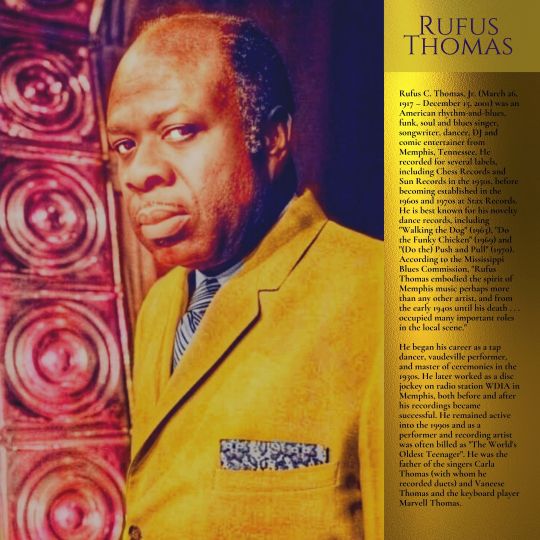
Rufus C. Thomas, Jr. (March 26, 1917 – December 15, 2001) was an American rhythm-and-blues, funk, soul and blues singer, songwriter, dancer, DJ and comic entertainer from Memphis, Tennessee. He recorded for several labels, including Chess Records and Sun Records in the 1950s, before becoming established in the 1960s and 1970s at Stax Records. He is best known for his novelty dance records, including "Walking the Dog" (1963), "Do the Funky Chicken" (1969) and "(Do the) Push and Pull" (1970). According to the Mississippi Blues Commission, "Rufus Thomas embodied the spirit of Memphis music perhaps more than any other artist, and from the early 1940s until his death . . . occupied many important roles in the local scene."
He began his career as a tap dancer, vaudeville performer, and master of ceremonies in the 1930s. He later worked as a disc jockey on radio station WDIA in Memphis, both before and after his recordings became successful. He remained active into the 1990s and as a performer and recording artist was often billed as "The World's Oldest Teenager". He was the father of the singers Carla Thomas (with whom he recorded duets) and Vaneese Thomas and the keyboard player Marvell Thomas.
Early life
Thomas was born in the rural community of Cayce, Mississippi, the son of a sharecropper. He moved with his family to Memphis, Tennessee, around 1920. His mother was a "church woman". Thomas made his debut as a performer at the age of six, playing a frog in a school theatrical production. By the age of 10, he was a tap dancer, performing on the streets and in amateur productions at Booker T. Washington High School, in Memphis. From the age of 13, he worked with Nat D. Williams, his high-school history teacher, who was also a pioneer black DJ at radio station WDIA and columnist for black newspapers, as a master of ceremonies at talent shows in the Palace Theater on Beale Street. After graduating from high school, Thomas attended Tennessee A&I University for one semester, but economic constraints led him to leave to pursue a career as a full-time entertainer.
Early career as a performer
Thomas began performing in traveling tent shows. In 1936 he joined the Rabbit Foot Minstrels, an all-black revue that toured the South, as a tap dancer and comedian, sometimes part of a duo, Rufus and Johnny. He married Cornelia Lorene Wilson in 1940, at a service officiated by Rev. C. L. Franklin, the father of Aretha Franklin, and the couple settled in Memphis. Thomas worked a day job in the American Finishing Company textile bleaching plant, which he continued to do for over 20 years. He also formed a comedy and dancing duo, Rufus and Bones, with Robert "Bones" Couch, and they took over as MCs at the Palace Theater, often presenting amateur hour shows. One early winner was B.B. King, and others discovered by Thomas later in the 1940s included Bobby Bland and Johnny Ace.
In the early 1940s, Thomas began writing and performing his own songs. He regarded Louis Armstrong, Fats Waller and Gatemouth Moore as musical influences. He made his professional singing debut at the Elks Club on Beale Street, filling in for another singer at the last minute, and during the 1940s became a regular performer in Memphis nightclubs, such as Currie's Club Tropicana. As an established performer in Memphis, aged 33 in 1950, Thomas recorded his first 78 rpm single, for Jesse Erickson's small Star Talent label in Dallas, Texas. Thomas said, "I just wanted to make a record. I never thought of getting rich. I just wanted to be known, be a recording artist. . . . [But] the record sold five copies and I bought four of them." The record, "I'll Be a Good Boy" backed with "I'm So Worried", gained a Billboard review, which stated that "Thomas shows first class style on a slow blues". He also recorded for the Bullet label in Nashville, Tennessee, when he recorded with Bobby Plater's Orchestra and was credited as "Mr. Swing"; the recordings were not recognised by researchers as being by Thomas until 1996. In 1951 he made his first recordings at Sam Phillips's Sun Studio, for the Chess label, but they were not commercially successful.
He began working as a DJ at radio station WDIA in 1951, and hosted an afternoon R&B show called Hoot and Holler. WDIA, featuring an African-American format, was known as "the mother station of the Negroes" and became an important source of blues and R&B music for a generation, its audience consisting of white as well as black listeners. Thomas used to introduce his shows saying, "I'm young, I'm loose, I'm full of juice, I got the goose so what's the use. We're feeling gay though we ain't got a dollar, Rufus is here, so hoot and holler." He also used to lead tours of white teenagers on "midnight rambles" around Beale Street.
His celebrity in the South was such that in 1953, at Sam Phillips's suggestion, he recorded "Bear Cat" for Sun Records, an "answer record" to Big Mama Thornton's R&B hit "Hound Dog". The record became the label's first national chart hit, reaching number 3 on the Billboard R&B chart. However, a copyright-infringement suit brought by Don Robey, the original publisher of "Hound Dog", nearly bankrupted the record label. After only one recording there, Thomas was one of the African-American artists released by Phillips, as he oriented his label more toward white audiences and signed Elvis Presley, who later recorded Thomas's song "Tiger Man". Thomas did not record again until 1956, when he made a single, "I'm Steady Holdin' On", for the Bihari brothers' Meteor label; musicians on the record included Lewie Steinberg, later a founding member of Booker T and the MGs.
Stax Records
In 1960 he made his first recordings with his 17-year-old daughter Carla, for the Satellite label in Memphis, which changed its name to Stax the following year. The song, "Cause I Love You", featuring a rhythm borrowed from Jesse Hill's "Ooh Poo Pa Doo", was a regional hit; the musicians included Thomas' son Marvell on keyboards, Steinberg, and the 16-year-old Booker T. Jones. The record's success led to Stax gaining production and distribution deal with the much larger Atlantic Records.
Rufus Thomas continued to record for the label after Carla's record "Gee Whiz (Look at His Eyes)" reached the national R&B chart in 1961. He had his own hit with "The Dog", a song he had originally improvised in performance based on a Willie Mitchell bass line, complete with imitations of a barking dog. The 1963 follow-up, "Walking the Dog", engineered by Tom Dowd of Atlantic, became one of his most successful records, reaching #10 on the Billboard pop chart. He became the first, and still the only, father to debut in the Top 10 after his daughter had first appeared there. The song was recorded in early 1964 by the Rolling Stones on their debut album, and was a minor UK chart hit for Merseybeat group the Dennisons later that year.
As well as recording and appearing on radio and in clubs, Thomas continued to work as a boiler operator in the textile plant, where he claimed the noises sometimes suggested musical rhythms and lyrics to him, before he finally gave up the job in 1963, to focus on his role as a singer and entertainer. He recorded a series of novelty dance tracks, including "Can Your Monkey Do the Dog'" and '"Somebody Stole My Dog" for Stax, where he was often backed by Booker T. & the MGs or the Bar-Kays. He also became a mentor to younger Stax stars, giving advice on stage moves to performers like Otis Redding, who partnered daughter Carla on record.
After "Jump Back" in 1964, the hits dried up for several years, as Stax gave more attention to younger artists and musicians. However, in 1970 he had another big hit with "Do the Funky Chicken", which reached #5 on the R&B chart, #28 on the pop chart, and #18 in Britain where it was his only chart hit. Thomas improvised the song while performing with Willie Mitchell's band at a club in Covington, Tennessee, including a spoken word section that he regularly used as a shtick as a radio DJ: "Oh I feel so unnecessary - this is the kind of stuff that makes you feel like you wanna do something nasty, like waste some chicken gravy on your white shirt right down front." The recording was produced by Al Bell and Tom Nixon, and used the Bar-Kays, featuring guitarist Michael Toles. Thomas continued to work with Bell and Nixon as producers, and later in 1970 had his only number 1 R&B hit [and his second-highest pop charting record] with another dance song, "Do the Push and Pull". A further dance-oriented release in 1971, "The Breakdown", climbed to number 2 R&B and number 31 Pop. In 1972, he featured in the Wattstax concert, and he had several further, less successful, hits before Stax collapsed in 1976.
Later career
Thomas continued to record and toured internationally, billing himself as "The World's Oldest Teenager" and describing himself as "the funkiest man alive". He "drew upon his vaudeville background to put [his songs] over on stage with fancy footwork that displayed remarkable agility for a man well into his fifties", and usually performed "while clothed in a wardrobe of hot pants, boots and capes, all in wild colors."
He continued as a DJ at WDIA until 1974, and worked for a period at WLOK before returning to WDIA in the mid 1980s to co-host a blues show. He appeared regularly on television and recorded albums for various labels. Thomas performed regularly at the Porretta Soul Festival in Italy; the outdoor amphitheater in which he performed was later renamed Rufus Thomas Park.
He played an important part in the Stax reunion of 1988, and appeared in Jim Jarmusch's 1989 film Mystery Train, Robert Altman's 1999 film Cookie's Fortune, and D. A. Pennebaker’s documentary Only the Strong Survive. Thomas released an album of straight-ahead blues, That Woman is Poison!, with Alligator Records in 1990, featuring saxophonist Noble "Thin Man" Watts. In 1996, he and William Bell headlined at the Olympics in Atlanta, Georgia. In 1997, he released an album, Rufus Live!, on Ecko Records. In 1998, he hosted two New Year's Eve shows on Beale Street.
In 1997, to commemorate his 80th birthday, the City of Memphis renamed a road off Beale Street, close to the old Palace Theater, as Rufus Thomas Boulevard. He received a Pioneer Award from the Rhythm and Blues Foundation in 1992, and a lifetime achievement award from ASCAP in 1997. He was inducted into the Blues Hall of Fame in 2001.
Death and legacy
He died of heart failure in 2001, at the age of 84, at St. Francis Hospital in Memphis. He is buried next to his wife Lorene, who pre-deceased him in 2000, at the New Park Cemetery in Memphis.
Writer Peter Guralnick said of him:
His music... brought a great deal of joy to the world, but his personality brought even more, conveying a message of grit, determination, indomitability, above all a bottomless appreciation for the human comedy that left little room for the drab or the dreary in his presence.
Thomas was honored with a marker on the Mississippi Blues Trail in Byhalia.
On June 25, 2019, The New York Times Magazine listed Rufus Thomas among hundreds of artists whose material was reportedly destroyed in the 2008 Universal fire.
In popular culture
Bobby Brown portrays Thomas in the BET television series American Soul.
10 notes
·
View notes
Text
DANCE LESSONS aka DANCING LESSONS
June 25, 1950
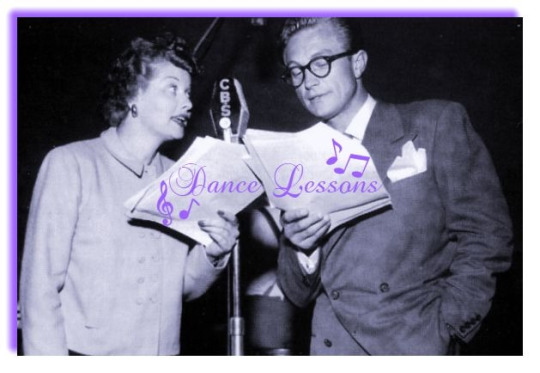
“Dance Lessons” aka “Dancing Lessons” aka “George Takes Dancing Lessons” is episode #94 of the radio series MY FAVORITE HUSBAND broadcast on June 25, 1950 on the CBS Radio Network. This is the final episode of season two. The third and final season begins on September 2, 1950.
Lucille Ball had mentioned in an interview that she might use the 1950 summer hiatus to make a movie based on the life of Robert Capa in Europe with Desi in the lead, but those plans never materialized. Instead, she spent the summer doing promotion for Fancy Pants, her film with Bob Hope, which premiered on July 19, 1950.
Synopsis ~ Liz cons George in to taking her to a nightclub by telling him it is to celebrate their anniversary but it is actually to celebrate the anniversary of the last time they went out to a dinner dance.
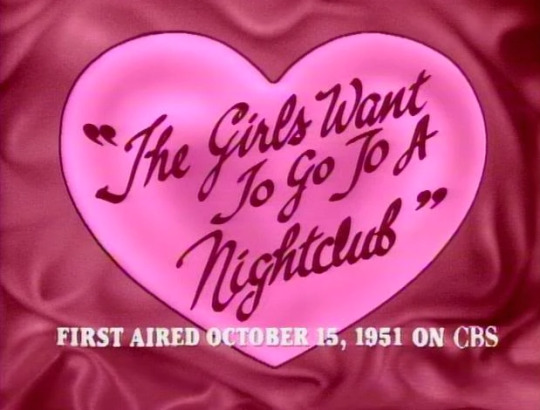
Note: This episode very loosely inspired the very first aired episode of “I Love Lucy” “The Girls Want To Go To A Nightclub” (ILL S1;E1) on October 15, 1951, although it was actually filmed second. The similarities are mostly thematic.
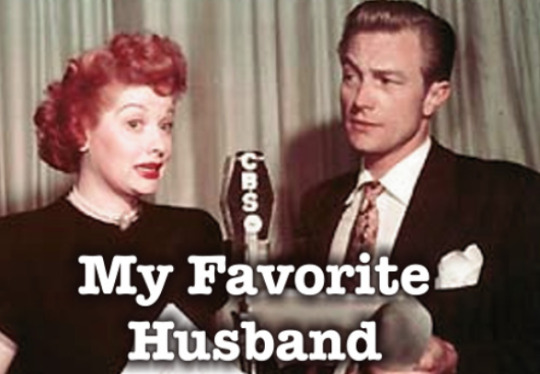
“My Favorite Husband” was based on the novels Mr. and Mrs. Cugat, the Record of a Happy Marriage (1940) and Outside Eden (1945) by Isabel Scott Rorick, which had previously been adapted into the film Are Husbands Necessary? (1942). “My Favorite Husband” was first broadcast as a one-time special on July 5, 1948. Lucille Ball and Lee Bowman played the characters of Liz and George Cugat, and a positive response to this broadcast convinced CBS to launch “My Favorite Husband” as a series. Bowman was not available Richard Denning was cast as George. On January 7, 1949, confusion with bandleader Xavier Cugat prompted a name change to Cooper. On this same episode Jell-O became its sponsor. A total of 124 episodes of the program aired from July 23, 1948 through March 31, 1951. After about ten episodes had been written, writers Fox and Davenport departed and three new writers took over – Bob Carroll, Jr., Madelyn Pugh, and head writer/producer Jess Oppenheimer. In March 1949 Gale Gordon took over the existing role of George’s boss, Rudolph Atterbury, and Bea Benaderet was added as his wife, Iris. CBS brought “My Favorite Husband” to television in 1953, starring Joan Caulfield and Barry Nelson as Liz and George Cooper. The television version ran two-and-a-half seasons, from September 1953 through December 1955, running concurrently with “I Love Lucy.” It was produced live at CBS Television City for most of its run, until switching to film for a truncated third season filmed (ironically) at Desilu and recasting Liz Cooper with Vanessa Brown.
REGULAR CAST
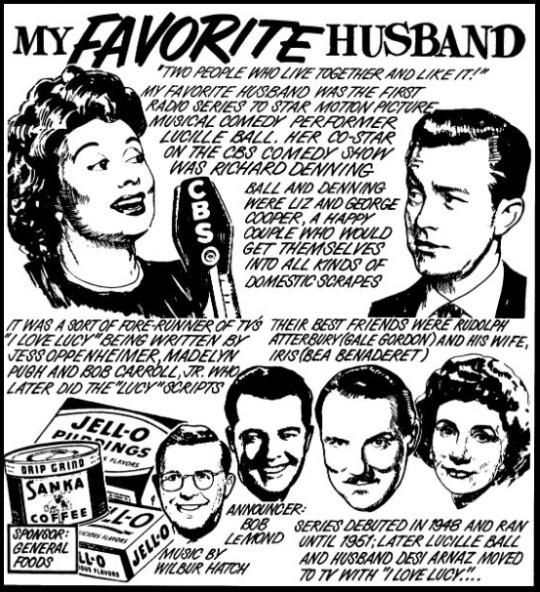
Lucille Ball (Liz Cooper) was born on August 6, 1911 in Jamestown, New York. She began her screen career in 1933 and was known in Hollywood as ‘Queen of the B’s’ due to her many appearances in ‘B’ movies. With Richard Denning, she starred in a radio program titled “My Favorite Husband” which eventually led to the creation of “I Love Lucy,” a television situation comedy in which she co-starred with her real-life husband, Latin bandleader Desi Arnaz. The program was phenomenally successful, allowing the couple to purchase what was once RKO Studios, re-naming it Desilu. When the show ended in 1960 (in an hour-long format known as “The Lucy-Desi Comedy Hour”) so did Lucy and Desi’s marriage. In 1962, hoping to keep Desilu financially solvent, Lucy returned to the sitcom format with “The Lucy Show,” which lasted six seasons. She followed that with a similar sitcom “Here’s Lucy” co-starring with her real-life children, Lucie and Desi Jr., as well as Gale Gordon, who had joined the cast of “The Lucy Show” during season two. Before her death in 1989, Lucy made one more attempt at a sitcom with “Life With Lucy,” also with Gordon.
Richard Denning (George Cooper) was born as Louis Albert Heindrich Denninger Jr., in Poughkeepsie, New York. When he was 18 months old, his family moved to Los Angeles. Plans called for him to take over his father’s garment manufacturing business, but he developed an interest in acting. Denning enlisted in the US Navy during World War II. He is best known for his roles in various science fiction and horror films of the 1950s. Although he teamed with Lucille Ball on radio in “My Favorite Husband,” the two never acted together on screen. While “I Love Lucy” was on the air, he was seen on another CBS TV series, “Mr. & Mrs. North.” From 1968 to 1980 he played the Governor on “Hawaii 5-0″, his final role. He died in 1998 at age 84.
Gale Gordon (Rudolph Atterbury) had worked with Lucille Ball on “The Wonder Show” on radio in 1938. One of the front-runners to play Fred Mertz on “I Love Lucy,” he eventually played Alvin Littlefield, owner of the Tropicana, during two episodes in 1952. After playing a Judge in an episode of “The Lucy-Desi Comedy Hour” in 1958, he would re-team with Lucy for all of her subsequent series’: as Theodore J. Mooney in ”The Lucy Show”; as Harrison Otis Carter in “Here’s Lucy”; and as Curtis McGibbon on "Life with Lucy.” Gordon died in 1995 at the age of 89.
Bea Benadaret (Iris Atterbury) was considered the front-runner to be cast as Ethel Mertz but when “I Love Lucy” was ready to start production she was already playing a similar role on TV’s “The George Burns and Gracie Allen Show” so Vivian Vance was cast instead. On “I Love Lucy” she was cast as Lucy Ricarodo’s spinster neighbor, Miss Lewis, in “Lucy Plays Cupid” (ILL S1;E15) in early 1952. Later, she was a success in her own show, “Petticoat Junction” as Shady Rest Hotel proprietress Kate Bradley. She starred in the series until her death in 1968.
Ruth Perrott (Katie, the Maid) was also later seen on “I Love Lucy.” She first played Mrs. Pomerantz, a member of the surprise investigating committee for the Society Matrons League in “Pioneer Women” (ILL S1;E25), was one of the member of the Wednesday Afternoon Fine Arts League in “Lucy and Ethel Buy the Same Dress” (ILL S3;E3), and also played a nurse when “Lucy Goes to the Hospital” (ILL S2;E16). She died in 1996 at the age of 96.
Bob LeMond (Announcer) also served as the announcer for the pilot episode of “I Love Lucy”. When the long-lost pilot was finally discovered in 1990, a few moments of the opening narration were damaged and lost, so LeMond – fifty years later – recreated the narration for the CBS special and subsequent DVD release.
GUEST CAST
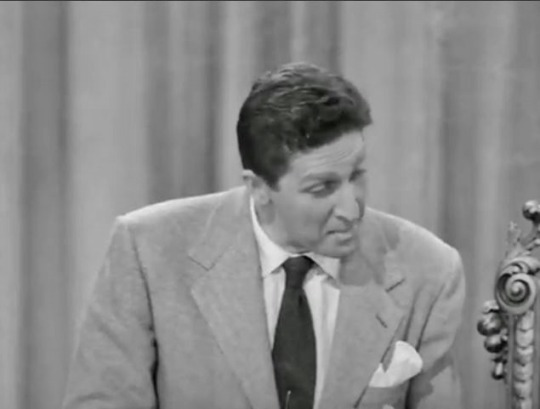
Peter Leeds (Speedy Krause / Headwaiter) was born in Bayonne, NJ, and was seen as the Reporter questioning the Maharincess of Franistan in “The Publicity Agent” (ILL S1;E31). He starred with Lucy in the films The Long, Long Trailer (1953) and The Facts of Life (1960) with Bob Hope. Coincidentally, he also appeared in “Lucy and Bob Hope” (ILL S6;E1) as well as an episode of “Here’s Lucy” in 1971.

Hal March (Waiter) first appeared on the "I Love Lucy” in “Lucy Fakes Illness” (ILL S1;E16) using his own name to play an actor posing as the doctor who diagnoses Lucy with ‘golbloots.’ March got his first big break when he was cast as Harry Morton on “The George Burns and Gracie Allen Show” in 1950. He eventually lost the part to Fred Clark who producers felt was better paired with Bea Benaderet, who played Blanche, and here plays Iris Atterbury. He stayed with the show in other roles, the last airing just two weeks before his appearance as Eddie Grant in “Lucy is Matchmaker” (ILL S2;E27). In 1966 he was seen on “The Lucy Show.”
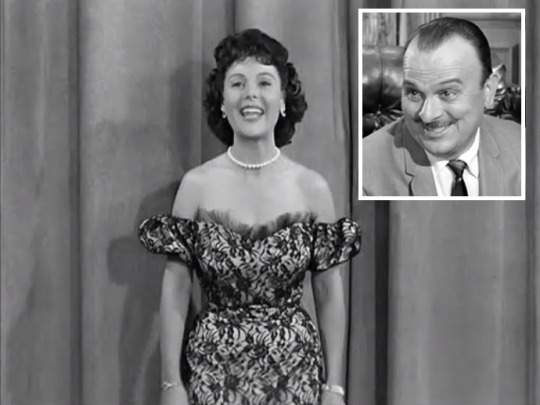
Veola Vonn (Starlight Girl / Miss Crawford / Secretary) played the Emcee of “Your Favorite Celebrity On TV”, the show Ricky goes on shackled to Lucy in “The Handcuffs” (ILL S2;E4). In real life, she was married to Frank Nelson, a character actor regularly appearing on “My Favorite Husband” and “I Love Lucy”. Before that, she was married to Hanley Stafford, whose final screen credit was as Principal Westcott on “The Lucy Show” in 1963.
EPISODE
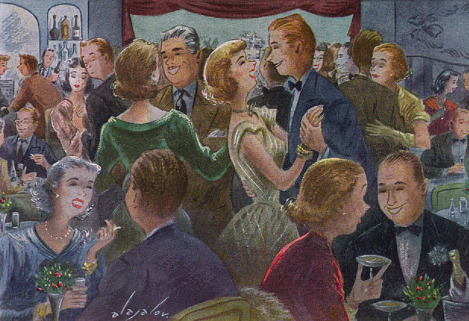
The episode opens with Liz and George dressing for an evening out at a nightclub. It is their anniversary - of the last time they went to a nightclub! The Atterbury’s are joining them there. George has trouble fitting into his tux. Liz intimates that he has gotten fat.
The Atterburys greet them at the club (”George boy! Liz girl”). The girls are excited, while the boys would rather play canasta. As usual, Liz has trouble catching the attention of the waiter. When she does (by screaming), she causes him to drop a tray. She then makes fun of his French accent. When the waiter is chastised by his boss, his accent suddenly disappears!
After dinner, the boys complain that the tables in the club are too close together.
IRIS: “They are pretty close, Liz. I got my elbows buttered three times.”
The music starts, but the boys are reluctant to dance, despite sarcastic hints by the girls.
LIZ (to George): “What about you, Najinsky?”
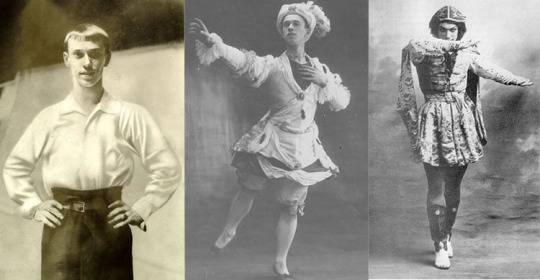
Vaslav Najinsky (1890-1950) was a Polish ballet dancer often cited as the greatest male dancer of the early 20th century. Born in Kiev to Polish parents, Nijinsky grew up in Imperial Russia but considered himself to be Polish. He was celebrated for his virtuosity and for the depth of his characterizations. He could dance en pointe, a rare skill among male dancers at the time, and was admired for his seemingly gravity-defying leaps. Najinsky died just 2 and a half months prior to this broadcast, so his name would have been in the news when the script was written.
Liz laments that they don’t go dancing as often since they got married.
LIZ: “Ever since we said ‘I do’ there are so many things we don’t!”
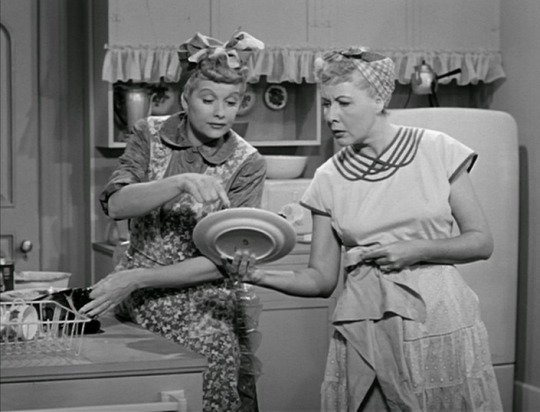
This classic line of dialogue was repeated verbatim in the first episode of “I Love Lucy” “The Girls Want To Go To A Nightclub” (ILL S1;E1). It was considered by producer Jess Oppenheimer to be the funniest line of the entire series. Perhaps both series’!
Speedy Krause, the club MC, interrupts the arguing with some bad jokes from the bandstand.
SPEEDY: “There are celebrities here tonight. Oh, pardon me, madam. I thought you were Boris Karloff.”
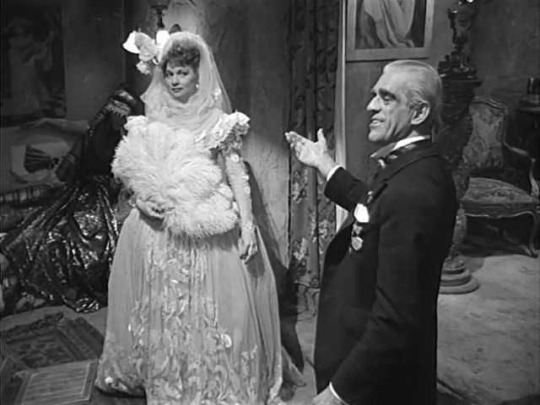
Boris Karloff (1887-1969) was born William Henry Pratt in Surrey, England. He is primarily known for his roles in horror films. He portrayed Frankenstein's monster in Frankenstein (1931), Bride of Frankenstein (1935) and Son of Frankenstein (1939). He also appeared as The Mummy (1932). In 1947, he starred with Lucille Ball in the film Lured. In 1950, he worked exclusively on television.
The boys quickly become bored with Speedy’s unfunny routine.
RUDOLPH: “This act would even be bad on television.”
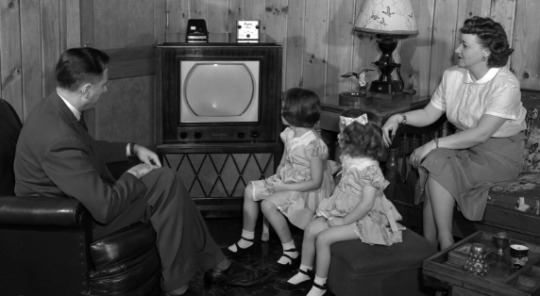
In 1950, television was still in its infancy, and quality programming was scarce. Five million TV sets were sold as the price dropped from $500 in 1949, to a more manageable $200. In 1950, just under 20 percent of American homes had a television set.
The floor show starts with the scantily clad Starlight Cuties, which causes the boys to drool and the girls to look for the exit. The Cuties head out onto the club floor to find dance partners. The boys suddenly turn into Najinsky!
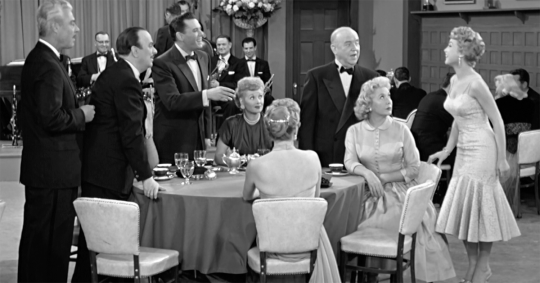
The moment feels very much like “The Country Club Dance” (ILL S6;E25) where the husbands all vie for the attention of sexy Diana Jordan (Barbara Eden).
The Starlight Cutie that approaches George and Rudolph even has a southern drawl like Diana’s. While the boys are ogling the Cutie, the girls flee the club and the act ends.
Next morning at the bank, George and Rudolph talk about their debacle of an evening at the nightclub. The girls suddenly drop by the office to forgive their husbands - under two conditions:
1. They take them dining and dancing monthly. 2. They take dancing lessons - starting this afternoon!
Mr. Atterbury is excited at the prospect:
RUDOLPH: “I’ve seen those girls who teach at Arthur Murray’s.”
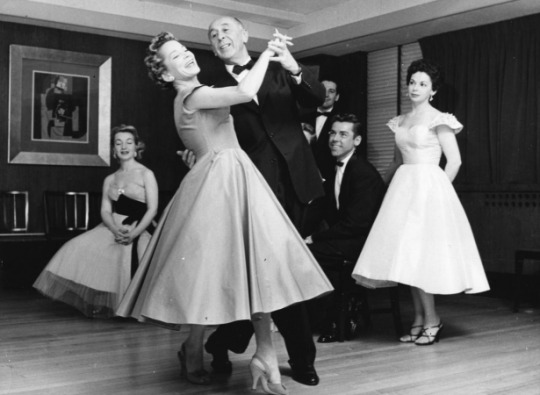
Arthur Murray (1895-1991) was a ballroom dancer and businessman, whose name is most often associated with the chain of dance studios that bear his name.
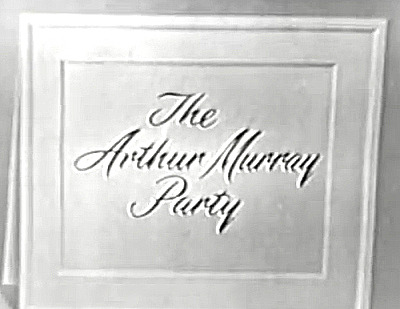
A month after this episode aired, Murray premiered the television show “The Arthur Murray Party” which was basically one long advertisement for their studios. It aired until 1960. In 1962, Lucille Ball and Arthur Murray were two of the many guests celebrating the 14th anniversary of “The Ed Sullivan Show.”

In “The Young Fans” (ILL S1;E20), Lucy tries to give love-struck Arthur Morton dance lessons, but confesses to Ricky that “Arthur Morton is no Arthur Murray.” Murray’s name is also mentioned in Desi Arnaz’s popular song, “Cuban Pete”: “And Cuban Pete doesn’t teach you in a hurry like Arthur Murray.”
However, Liz isn’t sending them to Arthur Murray, but to Professor Crawford’s School of the Dance, where she went as a child. Instead of being greeted by a befuddled old Professor, they meet his daughter, a breathless sexpot who immediately agrees to be their instructress.
Time passes. At the Cooper home, Katie the maid opens the door to Iris who has been shopping for their monthly nightclub outings. The boys have been attending lessons faithfully. Just then, Miss Crawford phones to leave a message for “Bright Eyes” Cooper! The jig (literally) is up! Liz and Iris realize why their husbands have been so regularly attending dance class. Liz and Iris dash to the dance studio to surprise the boys and let them know they have found out who they dancing with!
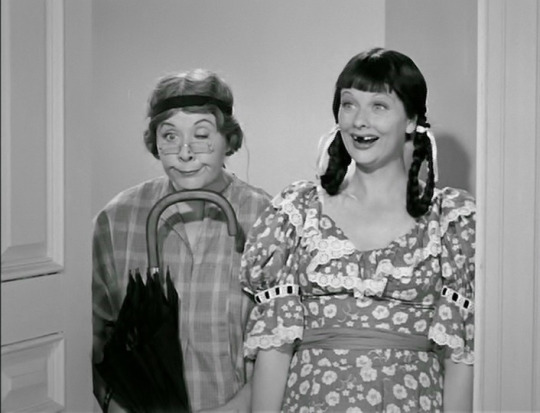
In “The Girls Want To Go To A Nightclub” (ILL S1;E1) Lucy and Ethel disguise themselves as country bumpkins in order to teach their husbands a lesson for looking for dates. Oddly, the radio version is more realistic, but less laugh-out-loud funny. The physical comedy of the television version is the reason it was chosen as the series premiere over “Lucy Thinks Ricky is Trying to Murder Her” which was filmed before, but aired fourth.
As punishment, Liz and Iris instruct the boys to dance with each other!
LIZ: “Don’t they make a lovely couple!”
End of Episode
#My Favorite Husband#Lucille Ball#Richard Denning#Bea Benadaret#gale gordon#Hal March#Veola Vonn#Frank Nelson#Vivian Vance#Dancing#arthur murray#desi arnaz#I Love Lucy#William Frawley#Barbara Eden#Boris Karloff#CBS TV#Radio#Najinsky#Fancy Pants#Bob Hope#1950#Peter Leeds#Bob Lemond#Ruth Perrott
1 note
·
View note
Link
Mongo Santamaria, a Cuban conga player and percussionist who arrived in New York at the beginning of the jazz-Latin fusion and was arguably the most popular Latin musician of the 1960's, died on Saturday. He was 85.
He had been placed on life support at a Miami hospital after a stroke last week, said Rosy Lopez, his niece and manager.
Most know Mr. Santamaria for two things: his version of Herbie Hancock's song ''Watermelon Man,'' which became a top-10 hit in 1963, and his authorship of ''Afro Blue,'' a song John Coltrane made famous. But those more familiar with Afro-Cuban music know that Mr. Santamaria was at the middle of the shift from the Afro-Cuban jazz of the 1950's to the salsa sound of the 1970's.
''Mongo's major contribution,'' said the percussionist Bobby Sanabria, ''was that he applied the conversational aspect normally played on the bongo to the conga drums. But more importantly, Mongo always represented the close ties that Cuban music has to West Africa.''
His given name was Ramon Santamaria. After establishing himself as a professional musician in his hometown of Havana, performing at the famous Tropicana Club with Conjunto Matamoros and Conjunto Azul, he toured Mexico with a dance team. In 1950 he arrived in New York and began working with Gilberto Valdés, playing charanga music, with its recognizable, courtly flutes-and-violin mixture in the frontline. Soon after, he worked with the popular bandleader Peréz Prado, and then for six years with Tito Puente, trading fireballs of percussion with the timbales-playing bandleader during the height of the mambo craze in New York City.
At the end of the 1950's Mr. Santamaria left Puente's band to join Cal Tjader, the San Francisco-based jazz vibraphonist, who was beginning to mix jazz and Latin music. With Tjader, Mr. Santamaria made the album ''Mas Caliente,'' among others; it was a new, mellower Latin-jazz sound, popular among jazz audiences and another affirmation of the wide applicability of Cuban music.
While with Tjader, Mr. Santamaria recorded his own albums on the side, first delving into his past, then into his future. ''Yambu,'' in 1958, was an authentic record of Cuban religious percussion and chanting, closely linked to West African music; ''Mongo,'' which included the tune ''Afro Blue,'' showed a stronger willingness to work with straight-ahead jazz musicians in his own music. He went back to charanga for few years afterward while still in San Francisco, but in late 1962 he wandered back toward New York and the jazz side of the fence, convening a band led by a trumpet and two saxophones.
One night when Herbie Hancock substituted for his regular pianist at a Bronx nightclub, the group worked out a Latin groove underneath Mr. Hancock's new composition ''Watermelon Man''; Mr. Santamaria quickly took it to the studio, and the song became the only time that Riverside, the distinguished jazz label, had a song on the top-10 pop charts.
That marked the beginning of the Latin-soul sound, popular through the 1960's. Mr. Santamaria signed with Columbia and made 10 records in a similar vein, Latinizing jazz tunes or R & B vocal numbers; when he was signed to Atlantic in 1971, he was so inured to the process that he left the decisions about the songs entirely to his musical director, Marty Sheller.
Though he never had another commercial breakthrough on the level of ''Watermelon Man,'' Mr. Santamaria maintained an identifiable sound, and using top-level musicians like Chick Corea, Ray Vega, Sonny Fortune, La Lupe, Hubert Laws and Mr. Sanabria, he recorded through the 90's for labels like Concord, Vaya, Roulette, Chesky and Milestone, playing in clubs and festivals around the world.
Mr. Santamaria retired from performing several years ago and had split his time between Miami and New York for the last 15 years. He is survived by six children: Nancy Anderson, Jose (Monguito) Santamaria, Rosa Santamaria and Felipe Santamaria, all of Miami; Felicia Santamaria of Los Angeles; and Ileana Santamaria of New York City; two sisters, Alicia Valdez of Miami and Rosa Mendiola of New York; eight grandchildren; and a great-grandchild.
#mongo santamaria#obituary#obituaries#rip#afro-cuban#afro-cuban jazz#afro cuban#afro cuban jazz#conga player#percussionist#ramon santamaria#riverside records#the new york times#jazz#latin jazz#west africa
4 notes
·
View notes
Text
CHARITY REVUE
March 11, 1949

“Charity Revue” (aka “Red Cross Benefit Revue”) is episode #34 of the radio series MY FAVORITE HUSBAND broadcast on March 11, 1949 on the CBS radio network.
Synopsis ~ Mr. Atterbury asks George to work up a song and dance routine for the local Red Cross Charity Review. At the same time Liz’s women’s club recruits her to perform.
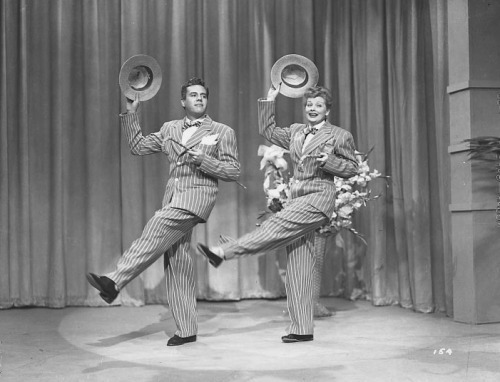
Note: This program was used as a basis for the “I Love Lucy” episode “The Benefit” (ILL S1;E13) filmed on November 30, 1951 and first aired on January 7, 1952.

“My Favorite Husband” was based on the novels Mr. and Mrs. Cugat, the Record of a Happy Marriage (1940) and Outside Eden (1945) by Isabel Scott Rorick, which had previously been adapted into the film Are Husbands Necessary? (1942). “My Favorite Husband” was first broadcast as a one-time special on July 5, 1948. Lucille Ball and Lee Bowman played the characters of Liz and George Cugat, and a positive response to this broadcast convinced CBS to launch “My Favorite Husband” as a series. Bowman was not available Richard Denning was cast as George. On January 7, 1949, confusion with bandleader Xavier Cugat prompted a name change to Cooper. On this same episode Jell-O became its sponsor. A total of 124 episodes of the program aired from July 23, 1948 through March 31, 1951. After about ten episodes had been written, writers Fox and Davenport departed and three new writers took over – Bob Carroll, Jr., Madelyn Pugh, and head writer/producer Jess Oppenheimer. In March 1949 Gale Gordon took over the existing role of George’s boss, Rudolph Atterbury, and Bea Benaderet was added as his wife, Iris. CBS brought “My Favorite Husband” to television in 1953, starring Joan Caulfield and Barry Nelson as Liz and George Cooper. The television version ran two-and-a-half seasons, from September 1953 through December 1955, running concurrently with “I Love Lucy.” It was produced live at CBS Television City for most of its run, until switching to film for a truncated third season filmed (ironically) at Desilu and recasting Liz Cooper with Vanessa Brown.
MAIN CAST
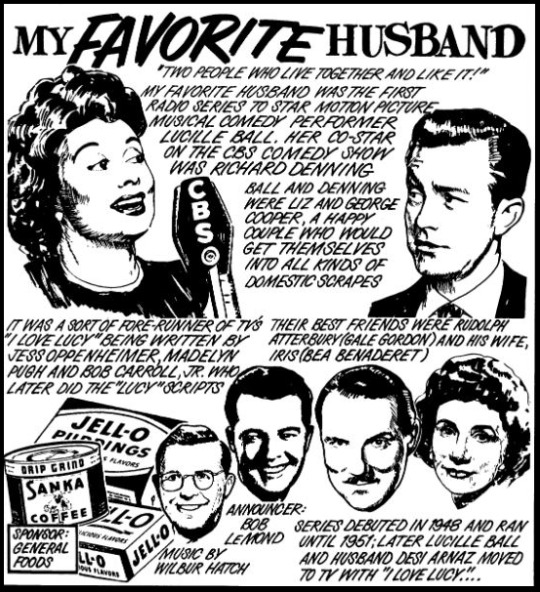
Lucille Ball (Liz Cooper) was born on August 6, 1911 in Jamestown, New York. She began her screen career in 1933 and was known in Hollywood as ‘Queen of the B’s’ due to her many appearances in ‘B’ movies. With Richard Denning, she starred in a radio program titled “My Favorite Husband” which eventually led to the creation of “I Love Lucy,” a television situation comedy in which she co-starred with her real-life husband, Latin bandleader Desi Arnaz. The program was phenomenally successful, allowing the couple to purchase what was once RKO Studios, re-naming it Desilu. When the show ended in 1960 (in an hour-long format known as “The Lucy-Desi Comedy Hour”) so did Lucy and Desi’s marriage. In 1962, hoping to keep Desilu financially solvent, Lucy returned to the sitcom format with “The Lucy Show,” which lasted six seasons. She followed that with a similar sitcom “Here’s Lucy” co-starring with her real-life children, Lucie and Desi Jr., as well as Gale Gordon, who had joined the cast of “The Lucy Show” during season two. Before her death in 1989, Lucy made one more attempt at a sitcom with “Life With Lucy,” also with Gordon.
Richard Denning (George Cooper) was born Louis Albert Heindrich Denninger Jr., in Poughkeepsie, New York. When he was 18 months old, his family moved to Los Angeles. Plans called for him to take over his father’s garment manufacturing business, but he developed an interest in acting. Denning enlisted in the US Navy during World War II. He is best known for his roles in various science fiction and horror films of the 1950s. Although he teamed with Lucille Ball on radio in “My Favorite Husband,” the two never acted together on screen. While “I Love Lucy” was on the air, he was seen on another CBS TV series, “Mr. & Mrs. North.” From 1968 to 1980 he played the Governor on “Hawaii 5-0″, his final role. He died in 1998 at age 84.
Gale Gordon (Rudolph Atterbury, George’s Boss) had worked with Lucille Ball on “The Wonder Show” on radio in 1938. One of the front-runners to play Fred Mertz on “I Love Lucy,” he eventually played Alvin Littlefield, owner of the Tropicana, during two episodes in 1952. After playing a Judge in an episode of “The Lucy-Desi Comedy Hour” in 1958, he would re-team with Lucy for all of her subsequent series’: as Theodore J. Mooney in ”The Lucy Show”; as Harrison Otis Carter in “Here’s Lucy”; and as Curtis McGibbon on “Life with Lucy.” Gordon died in 1995 at the age of 89.
This is Gordon’s first appearance as Rudolph Atterbury, a role previous played by Hans Conried.
Bea Benadaret does not appear in this episode.
Ruth Perrott (Katie, the Maid) was also later seen on “I Love Lucy.” She first played Mrs. Pomerantz (above right), a member of the surprise investigating committee for the Society Matrons League in “Pioneer Women” (ILL S1;E25), as one of the member of the Wednesday Afternoon Fine Arts League in “Lucy and Ethel Buy the Same Dress” (ILL S3;E3), and also played a nurse when “Lucy Goes to the Hospital” (ILL S2;E16). She died in 1996 at the age of 96.
Bob LeMond (Announcer) also served as the announcer for the pilot episode of “I Love Lucy”. When the long-lost pilot was finally discovered in 1990, a few moments of the opening narration were damaged and lost, so LeMond – fifty years later – recreated the narration for the CBS special and subsequent DVD release.
GUEST CAST
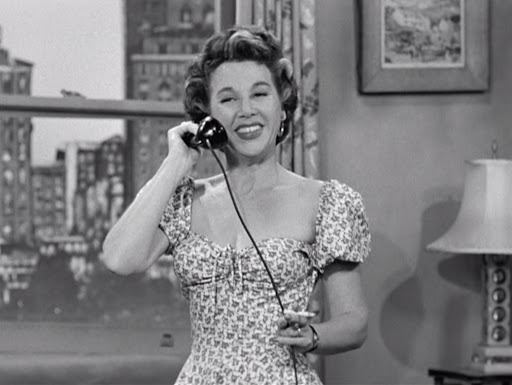
Gloria Blondell (Miss Marilyn Williams) was born to theatrical parents in New York City in 1910. She is the younger sister of Joan Blondell, also an actress. On radio, she did 26 episodes of seven different series. Blondell saw most of her work in the 1940s as the voice of Disney’s ‘Daisy Duck’ for Disney, doing six short films as Donald’s girlfriend. Blondell’s only screen collaboration with Lucille Ball was in “The Anniversary Present” (ILL S2;E3) in 1952, playing the Ricardo’s upstairs neighbor Grace Foster.
Giving the character the first name of Marilyn is no doubt meant to remind listeners of up-and-coming sex symbol Marilyn Monroe.
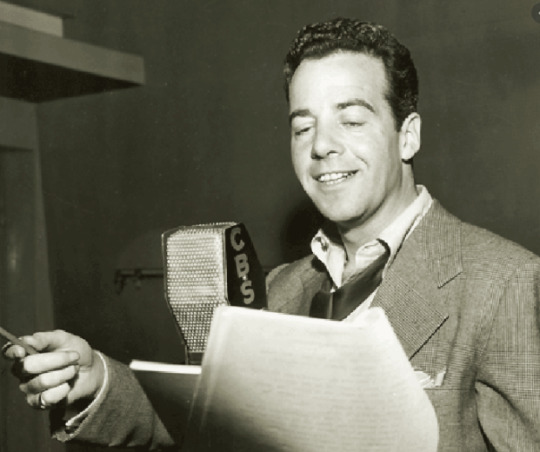
Gerald Mohr (Gerald Mohr) played psychiatrist Henry Molin, who masquerades as Ricky’s old friend Chuck Stewart in “The Inferiority Complex” (ILL S2;E18 ~ February 2, 1953), his only appearance on "I Love Lucy”. In return, Lucy and Desi appeared on his show “Sunday Showcase” that same year. He also made an appearance on “The Lucy Show” in “Lucy and Phil Harris” (TLS S6;E20 ~ February 5, 1968).
Mohr uses his own name for this appearance.
EPISODE
ANNOUNCER: “As we look in on the Coopers this morning, George is still upstairs getting dressed. Liz is in the kitchen, talking to Katie the Maid.”
Liz tells Katie that she’s excited for the upcoming Red Cross benefit. She is planning to do an act with George representing her club. The only detail is that she hasn’t told him about it yet!
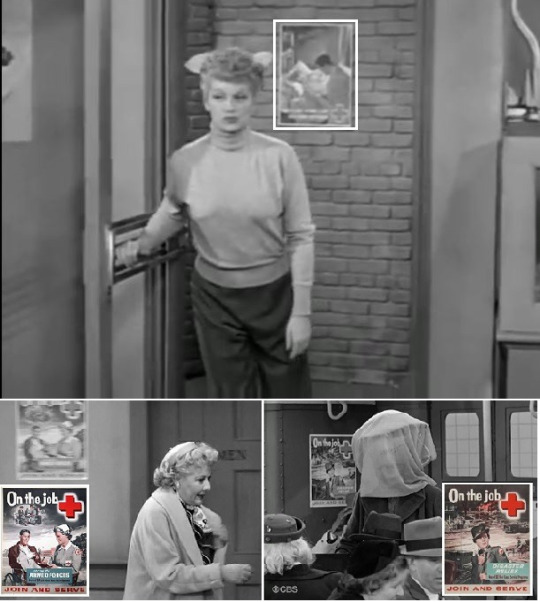
The Red Cross is a humanitarian organization founded in 1863 to protect human life and health, to ensure respect for all human beings, and to prevent and alleviate human suffering. American Red Cross posters were a favorite of the Desilu set decorators on “I Love Lucy”. They can be glimpsed in the subway during “Lucy and the Loving Cup” (ILL S6;E12), on the walls of the rented hall in “Ricky Has Labor Pains” (S2;E14), in the butcher shop in “The Freezer” (S1;E29), and on the Westport train station in “Lucy Misses the Mertzes” (S6;E17).
Liz goes into the dining room and sweet-talks George, covering him with kisses. He is immediately suspicious. Liz tells him that a woman in her club is doing an act with her husband for the Red Cross revue. George laughs and says the man will make a fool of himself - until Liz tells him that the man is him!
GEORGE: “You know if there’s one thing I hate more than that club of yours is amateur theatrics!”
Liz reminds him that he had the lead in his college musical and he was a big hit. She sings a few notes of “Boola Boola” to remind him.

"Boola Boola" is a football song of Yale University. The song was composed in 1900 and is generally attributed to Allan M. Hirsh, Yale Class of 1901. The song immediately caught on, soon being played by John Philip Sousa. It sold more sheet music in the first half of 1901 than any other song in the country, and became indelibly associated with Yale athletics. Is George a Yale man?
George is still reluctant, but Liz tries to convince him.
LIZ: “Jolson made a comeback. How about you?”

Al Jolson (1886-1950) was a Lithuanian-born singer, actor, and comedian. Unabashedly billed as the World’s Greatest Entertainer, Jolson was the most successful musical comedy star on Broadway in the 1910s and 1920s. He was also a major radio star and the most popular solo recording artist of the 1920s, his biggest hits being “Sonny Boy”, “April Showers,” and “Swanee.” He inaugurated sound motion pictures with The Jazz Singer (1927) and made a series of musical films. He enjoyed a spectacular career comeback in the years before his death, largely due to the film biographies The Jolson Story (1946) and Jolson Sings Again (1949). Jolson’s use of blackface, dating from his early years in minstrel shows, made him a controversial figure.
George refuses to give in.
At the bank, Mr. Atterbury calls George into his office. He tells George he should work up a song and dance routine with his wife to represent the bank in the Red Cross Revue. George says he can’t do it, but Mr. Atterbury threatens to demote him if he refuses. George admits defeat and reluctantly agrees.
Back at home, Liz hangs up the phone after telling her club the she won’t be doing the act after all. George comes home cheerfully singing “There’s No Business Like Show Business”.

“There’s No Business Like Show Business” is a song from Irving Berlin’s 1949 Broadway hit Annie Get Your Gun. It was introduced by Ethel Merman as Annie Oakley. In “Lucy Has Her Eyes Examined” (ILL S3;E11), Lucy Ricardo and the Mertzes burst into an rendition of the song as an impromptu audition for a Broadway producer. The song would also be quoted (not sung) by Lucy Ricardo in “Baby Pictures” (ILL S3;E5) and “Lucy Teaches Ethel Merman To Sing” (TLS S2;E18). Merman and the cast of “The Lucy Show” perform it in “Ethel Merman and the Boy Scout Show” (TLS S2;E19 ~ February 10, 1964).
GEORGE: “Hiya, Liz!” LIZ: “Hiya, Bing.” GEORGE: “How do the old pipes sound?” LIZ: “Like they could use a little Drano.”

Liz is referring to singer, actor and comedian Bing Crosby, one of the biggest media stars of the 1940s. On “I Love Lucy” a Hollywood-bound Ricky called Crosby a bum - but dressed like him all the same. In “Lucy Takes a Cruise to Havana” (1957) Susie MacNamara tries to convince Lucy to become a Bing Crosby fan instead Rudy Vallee. Crosby’s name was mentioned on “The Lucy Show” and “Here’s Lucy.” The Drackett Company first launched the Drano product in 1923. Its purpose was to clear clogged pipes (not the human sort). Drano was originally produced in crystallized form.
Liz is surprised that George has suddenly changed his ‘tune’ and now wants to do the Revue with Liz as the star. He even has a song picked out for them. He sits at the piano and begins to play and sing “Zing! Went the Strings of My Heart”.

"Zing! Went the Strings of My Heart" is a 1934 song with words and music by James F. Hanley. It was introduced in the Broadway revue Thumbs Up! The most notable recordings were made by Judy Garland, who recorded it numerous times, including in the 1938 film Listen, Darling in 1939. It later became a standard number in her concerts and TV shows.
Liz only has to sing one word “Zing!” After a few choruses, she stops the rehearsal, unhappy with her small part.
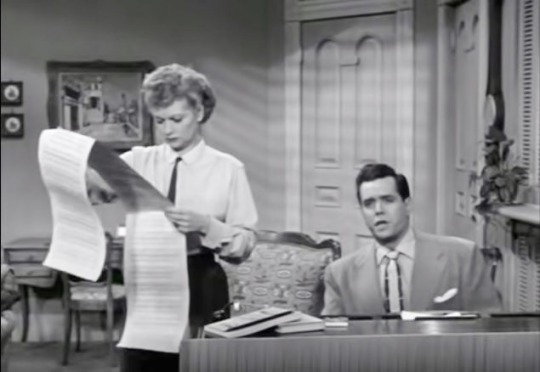
On television, the song was “Auf Wiedersehen, My Dear” with Lucy only allowed to sing the word “Auf”!
George agrees to find another opening song. They start to work on their comedy patter. While rehearsing the jokes, Liz realizes that George is telling all the jokes while she is the straight man not saying anything funny.
LIZ: “I’m Liz Cooper, not Harpo Marx!”

Harpo Marx (born Adolph Marx) was the second of five performing brothers. Harpo was so named because of his musical talent on the Harp, but he also never spoke in his comedy. In 1922, he and his brothers left vaudeville to perform on Broadway, and soon landed in Hollywood making movies together throughout the 1930s and 40s. Lucille Ball starred with the Marx Brothers in Room Service (1938) and Harpo famously guest-starred on “I Love Lucy” in 1955.
GEORGE: “What would Amos be without Andy? What would Lum be without Abner?”
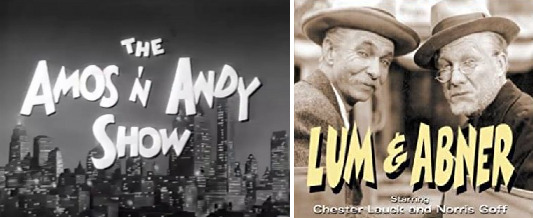
Amos 'n' Andy is a radio and television sitcom set in Harlem. The original radio show, which ran from 1928 to 1960, was created, written and voiced by two white actors, Freeman Gosden (Amos) and Charles Correll (Andy). When the show moved to television, black actors took over the roles of Amos (Alvin Childress) and Andy (Spencer Williams). Lum and Abner was a radio comedy created by and starring Chester Lauck (as Abner Peabody) and Norris Goff (as Lum Edwards) that aired from 1931 to 1954. Modeled on life in a small town in Arkansas, the show proved immensely popular.
Liz says that since they are representing her club, she needs to have the larger role. George confesses that Mr. Atterbury wants him to represent the bank. Liz says the act is off. George says he find one of the girls at the bank to be his partner. Liz assumes the ‘girls’ at the bank are old fuddy duddies! Next day, Miss Marilyn Williams (Gloria Blondell) arrives to rehearse. Her fuddy isn’t duddy at all! Liz tells Miss Williams that George left on a trip to South America. Just then, George bounds in and says he only went to put the car in the garage.
LIZ: “I always get confused. Our car is a Reo.”
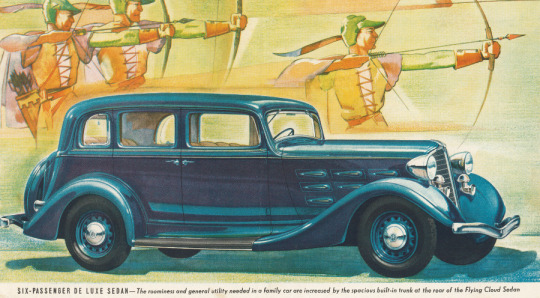
Liz is punning on the homophones Rio (Rio de Janeiro, Brazil) and Reo (the make of automobile). Reo (sometimes seen REO) was founded by Ransom E. Olds in August 1904. Reo manufactured automobiles from 1905 to 1936, including the famous Reo Speed-Wagon, an ancestor of the pickup truck, which gave its name to the 1970s rock and roll group REO Speedwagon. Although World War II truck orders enabled it to make something of a comeback, the company remained unstable in the postwar era. In 1975, they filed for bankruptcy.
Miss Williams and George go into the den and close the door to rehearse while Liz and Katie listen on the landing just outside, peeking through the transom. They hear carefree laughter from the room. George and Miss Williams are rehearsing a love scene when Liz bursts in offering them a snack. Miss Williams says that Liz is acting jealous. Liz calls her an ‘older woman’.
MISS WILLIAMS: “You don’t have to get nasty with me, Liz Cooper. I’m not going to steal your son away.” LIZ: “My son! Listen here, you poor man’s Marjorie Main!” MISS WILLIAMS: “You start anything and I’ll black your eyes to match your hair!” LIZ: “My hair is red.” MISS WILLIAMS: “I’m talking about the roots!”

Marjorie Main (1890-1975) was then a 49 year-old character actress who earned a 1948 Oscar nomination for The Egg and I. In 1954 she was a supporting player in Lucy and Desi’s The Long, Long Trailer (1953).
Next day, Liz has invited over a handsome man (Gerald Mohr) to rehearse a ‘passionate love scene with her’. It turns out that George and Gerald were fraternity brothers! George decides to sit by and watch Liz and Gerald rehearse.

The scene is similar to Mohr’s appearance as a psychiatrist on “I Love Lucy,” where he flatters Lucy and inadvertently makes Ricky jealous as part of his ‘treatment’.
George tries to distract Gerald by asking about former fraternity brothers. George and Gerald think the love scene will get a million laughs, which makes Liz dissolve into tears.
The night of the Red Cross show, Liz tells Katie she’s going to be George’s partner no matter what! George is on right after Evelyn and Her Magic Kazoo. Liz tells Miss Williams that George wants to see her in his dressing room - then locks her in!
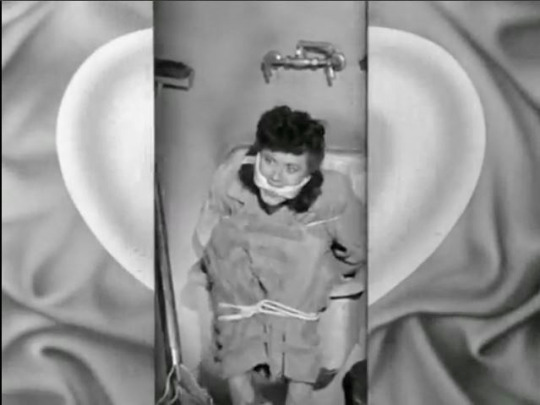
On an early episode of “I Love Lucy,” a jealous Lucy also locked her husband’s performance partner away - in a storage closet - so that she could take her place. Much later, an envious Lucy locked Tallulah Bankhead in a backstage bathroom so she could steal the spotlight during the Westport PTA show.
Liz tells George Miss Williams couldn’t make it and she will talk her place. They go onstage. The music connecting the jokes is "When You Wore a Tulip and I Wore a Big Red Rose".
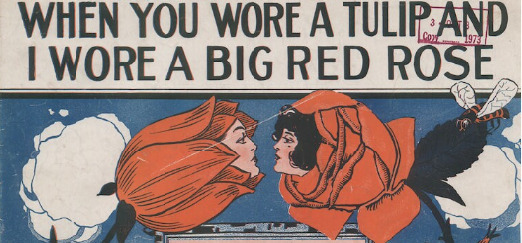
"When You Wore a Tulip and I Wore a Big Red Rose" was written in 1914 by Jack Mahoney and Percy Wenrich. At the time of broadcast (1949) it had been heard in sixteen films, including the 1942 film For Me And My Gal starring Judy Garland and 1949′s Chicken Every Sunday starring William Frawley (Fred Mertz). On “My Favorite Husband” it will also be heard in “Liz Writes A Song” (January 27, 1950).
This time, however, Liz has stolen all of George’s punch lines!
GEORGE: “A tramp came up to me and said he hadn’t had a bite in days.” LIZ: “What’d you do? Bite him?”
GEORGE: “Did you hear about the big fire at the shoe factory?” LIZ: “I’ll bet some heal started it!” GEORGE (hushed to Liz): “You’re supposed to say ‘Who stated it’.” LIZ (loudly): “Two hundred souls were lost!”
George tries to outsmart Liz with a joke she’s never heard.
GEORGE: “I know a girl so dumb she thinks a football coach has four wheels!” LIZ: “How many wheels does it have?”
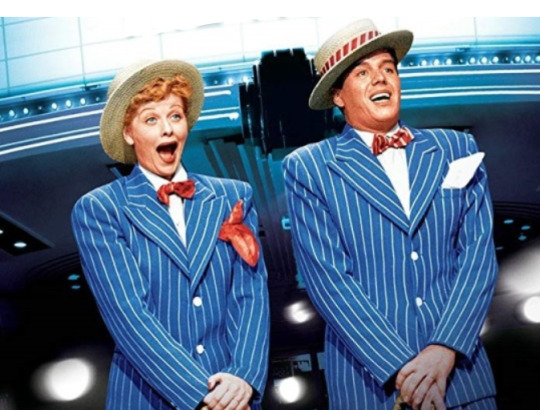
These are the same jokes that will be used in the television version “The Benefit” (ILL S1;E13) although the interlocutory music was changed to “We’ll Build A Bungalow”. The Arnazes loved the material so much that they started doing the "Songs and Witty Sayings" routine at various industry functions and charity events including the televised "Dinner with the President" event on November 25, 1953. The material was even part of the unreleased “I Love Lucy” movie.
End of Episode
#My Favorite Husband#The Benefit#I Love Lucy#Red Cross#Lucille Ball#Richard Denning#Gale Gordon#Ruth Perrott#Gloria Blondell#Gerald Mohr#Marjorie Main#Bob LeMond#Reo#Lum and Abner#Amos and Andy#Radio#CBS#Harpo Marx#Zing Went the Strings of My Heart#Bing Crosby#Drano#THere's NO business Like Show Business#Al Jolson#Boola Boola
0 notes
Text
Rufus Thomas
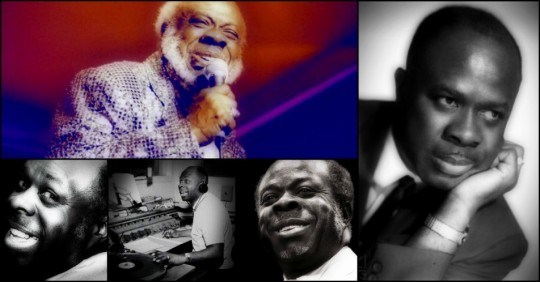
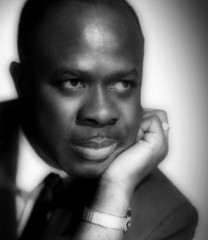
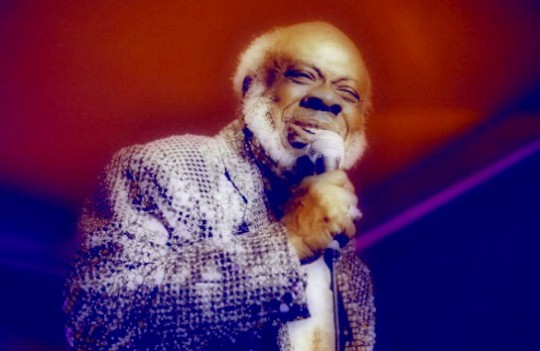
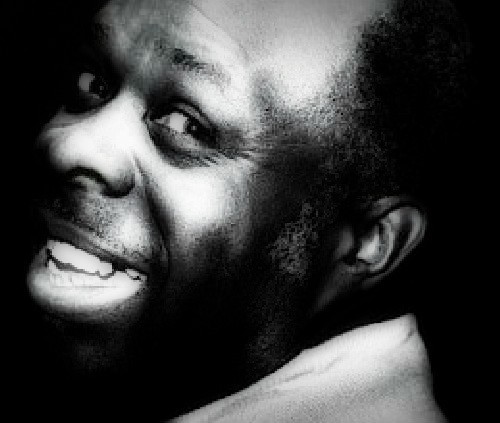
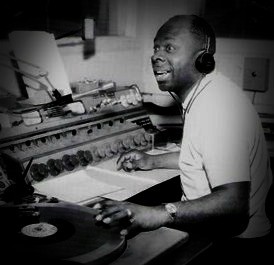

Rufus C. Thomas, Jr. (March 26, 1917 – December 15, 2001) was an American rhythm and blues, funk, soul and blues singer, songwriter, dancer, DJ and comic entertainer from Memphis, Tennessee. He recorded for several labels including Chess and Sun in the 1950s, before becoming established in the 1960s and 1970s at Stax Records. He is best known for his novelty dance records including "Walking the Dog" (1963), "Do the Funky Chicken" (1969) and "(Do the) Push and Pull" (1970). According to the Mississippi Blues Commission, "Rufus Thomas embodied the spirit of Memphis music perhaps more than any other artist, and from the early 1940s until his death... occupied many important roles in the local scene."
His career began as a tap dancer, vaudeville performer, and master of ceremonies in the 1930s, and he later also worked as a disc jockey on radio station WDIA in Memphis, both before and after his recordings became successful. He remained active into the 1990s, and as a performer and recording artist was often billed as "The World's Oldest Teenager". He was the father of singers Carla Thomas (with whom he recorded duets) and Vaneese Thomas, and keyboard player Marvell Thomas.
Early life
Born a sharecropper's son in the rural community of Cayce, Mississippi, Thomas moved to Memphis, Tennessee, with his family around 1920. His mother was "a church woman". Thomas made his debut as a performer at the age of six, playing a frog in a school theatrical production. By the age of 10, he was a tap dancer, performing on the streets as well as in amateur productions at Memphis' Booker T. Washington High School. From the age of 13, he worked with Nat D. Williams, his high school history teacher who was also a pioneer black DJ at WDIA and columnist for black newspapers, as a master of ceremonies at talent shows in the Palace Theater on Beale Street.
Early career as a performer
Thomas also began performing in traveling tent shows. After graduating from high school, he attended one semester at Tennessee A&I University, but due to economic constraints left to pursue a career as a full-time entertainer. In 1936 he joined the Rabbit Foot Minstrels, an all-black revue that toured the South, as a tap dancer and comedian, sometimes part of a duo, Rufus and Johnny. He married Cornelia Lorene Wilson in 1940, at a service officiated by Aretha Franklin's father, Rev. C. L. Franklin, and the couple settled in Memphis. Thomas worked a day job in the American Finishing Company textile bleaching plant, which he continued to do for over 20 years. He also formed a comedy and dancing duo, Rufus and Bones, with Robert "Bones" Couch, and they took over as MCs at the Palace Theater, often presenting amateur hour shows. One early winner was B. B. King, and others first discovered by Thomas later in the 1940s included Bobby Bland and Johnny Ace.
In the early 1940s, Thomas began writing and performing his own songs. He regarded Louis Armstrong, Fats Waller and Gatemouth Moore as his musical influences. He made his professional singing debut at the Elks Club on Beale Street, filling in for another singer at the last minute, and during the 1940s became a regular performer in Memphis nightclubs such as Currie`s Club Tropicana. As an established performer in Memphis, aged 33 in 1950, Thomas recorded his first 78 rpm single, for Jesse Erickson's small Star Talent label in Dallas, Texas. Thomas said: "I just wanted to make a record. I never thought of getting rich. I just wanted to be known, be a recording artist..... [But] the record sold five copies and I bought four of them." The record, "I'll Be a Good Boy"/"I'm So Worried", gained a Billboard review stating: "Thomas shows first class style on a slow blues". He also recorded for the Bullet label in Nashville, Tennessee, when he recorded with Bobby Plater's Orchestra and was credited as "Mr. Swing"; the recordings were not recognised by researchers as being by Thomas until 1996. In 1951 he made his first recordings at Sam Phillips' Sun Studio, for the Chess label, but they were not commercially successful.
He began working as a DJ at radio station WDIA in 1951, and hosted an afternoon R&B show called Hoot and Holler. WDIA, featuring an African-American format, was known as "the mother station of the Negroes" and became an important source of blues and R&B music for a generation, its audience consisting of white as well as black listeners. Thomas used to introduce his shows saying: "I'm young, I'm loose, I'm full of juice, I got the goose so what's the use. We're feeling gay though we ain't got a dollar, Rufus is here, so hoot and holler." He also used to lead tours of white teenagers on "midnight rambles" around Beale Street.
His celebrity in the South was such that in 1953, at Sam Phillips' suggestion, he recorded an "answer record" to Big Mama Thornton's R&B hit, "Hound Dog", called "Bear Cat" released on Sun Records. The record became the label's first national chart hit, reaching #3 on the Billboard R&B chart. However, a copyright-infringement suit placed by Don Robey, the original publisher of "Hound Dog", nearly bankrupted the record label. After only one recording there, Thomas was one of the African-American artists released by Phillips, as he oriented his label more toward white audiences and signed Elvis Presley, who later recorded Thomas' song "Tiger Man". Thomas did not record again until 1956, when he made a single, "I'm Steady Holdin' On", for the Bihari brothers' Meteor label; musicians on the record included Lewie Steinberg, later a founding member of Booker T and the MGs.
Stax Records
In 1960 he made his first recordings with his 17-year-old daughter Carla, for the Satellite label in Memphis, which changed its name to Stax the following year. The song, "Cause I Love You", featuring a rhythm borrowed from Jesse Hill's "Ooh Poo Pa Doo", was a regional hit; the musicians included Thomas' son Marvell on keyboards, Steinberg, and the 16-year-old Booker T. Jones. The record's success led to Stax gaining production and distribution deal with the much larger Atlantic Records.
Rufus Thomas continued to record for the label after Carla's record "Gee Whiz" reached the national R&B chart in 1961. He had his own hit with "The Dog", a song he had originally improvised in performance based on a Willie Mitchell bass line, complete with imitations of a barking dog. The 1963 follow-up, "Walking the Dog", engineered by Tom Dowd of Atlantic, became one of his most successful records, reaching #10 on the Billboard pop chart. He became the first, and still the only, father to debut in the Top 10 after his daughter had first appeared there. The song was recorded in early 1964 by the Rolling Stones on their debut album, and was a minor UK chart hit for Merseybeat group the Dennisons later that year.
As well as recording and appearing on radio and in clubs, Thomas continued to work as a boiler operator in the textile plant, where he claimed the noises sometimes suggested musical rhythms and lyrics to him, before he finally gave up the job in 1963, to focus on his role as a singer and entertainer. He recorded a series of novelty dance tracks, including "Can Your Monkey Do the Dog'" and '"Somebody Stole My Dog" for Stax, where he was often backed by Booker T. & the MGs or the Bar-Kays. He also became a mentor to younger Stax stars, giving advice on stage moves to performers like Otis Redding, who partnered daughter Carla on record.
After "Jump Back" in 1964, the hits dried up for several years, as Stax gave more attention to younger artists and musicians. However, in 1970 he had another big hit with "Do the Funky Chicken", which reached #5 on the R&B chart, #28 on the pop chart, and #18 in Britain where it was his only chart hit. Thomas improvised the song while performing with Willie Mitchell's band at a club in Covington, Tennessee, including a spoken word section that he regularly used as a shtick as a radio DJ: "Oh I feel so unnecessary - this is the kind of stuff that makes you feel like you wanna do something nasty, like waste some chicken gravy on your white shirt right down front." The recording was produced by Al Bell and Tom Nixon, and used the Bar-Kays, featuring guitarist Michael Toles. Thomas continued to work with Bell and Nixon as producers, and later in 1970 had his only number 1 R&B hit, and his highest pop charting record, with another dance song, "Do the Push and Pull". A further dance-oriented release in 1971, "The Breakdown", climbed to number 2 R&B and number 31 Pop. In 1972, he featured in the Wattstax concert, and he had several further, less successful, hits before Stax collapsed in 1976.
Later career
Thomas continued to record and toured internationally, billing himself as "The World's Oldest Teenager" and describing himself as "the funkiest man alive". He "drew upon his vaudeville background to put [his songs] over on stage with fancy footwork that displayed remarkable agility for a man well into his fifties", and usually performed "while clothed in a wardrobe of hot pants, boots and capes, all in wild colors."
He continued as a DJ at WDIA until 1974, and worked for a period at WLOK before returning to WDIA in the mid 1980s to co-host a blues show. He appeared regularly on television and recorded albums for various labels. Thomas performed regularly at the Porretta Soul Festival in Italy; the outdoor amphitheater in which he performed was later renamed Rufus Thomas Park.
He played an important part in the Stax reunion of 1988, and appeared in Jim Jarmusch's 1989 film Mystery Train, Robert Altman's 1999 film Cookie's Fortune, and D. A. Pennebaker’s documentary Only the Strong Survive. Thomas released an album of straight-ahead blues, That Woman is Poison!, with Alligator Records in 1990, featuring saxophonist Noble "Thin Man" Watts. In 1996, he and William Bell headlined at the Olympics in Atlanta, Georgia. In 1997, he released an album, Rufus Live!, on Ecko Records. In 1998, he hosted two New Year's Eve shows on Beale Street.
In 1997, to commemorate his 80th birthday, the City of Memphis renamed a road off Beale Street, close to the old Palace Theater, as Rufus Thomas Boulevard. He received a Pioneer Award from the Rhythm and Blues Foundation in 1992, and a lifetime achievement award from ASCAP in 1997. He was inducted into the Blues Hall of Fame in 2001.
Death and legacy
He died of heart failure in 2001, at the age of 84, at St. Francis Hospital in Memphis. He is buried next to his wife Lorene, who pre-deceased him in 2000, at the New Park Cemetery in Memphis.
Writer Peter Guralnick said of him:
His music... brought a great deal of joy to the world, but his personality brought even more, conveying a message of grit, determination, indomitability, above all a bottomless appreciation for the human comedy that left little room for the drab or the dreary in his presence.
Wikipedia
6 notes
·
View notes